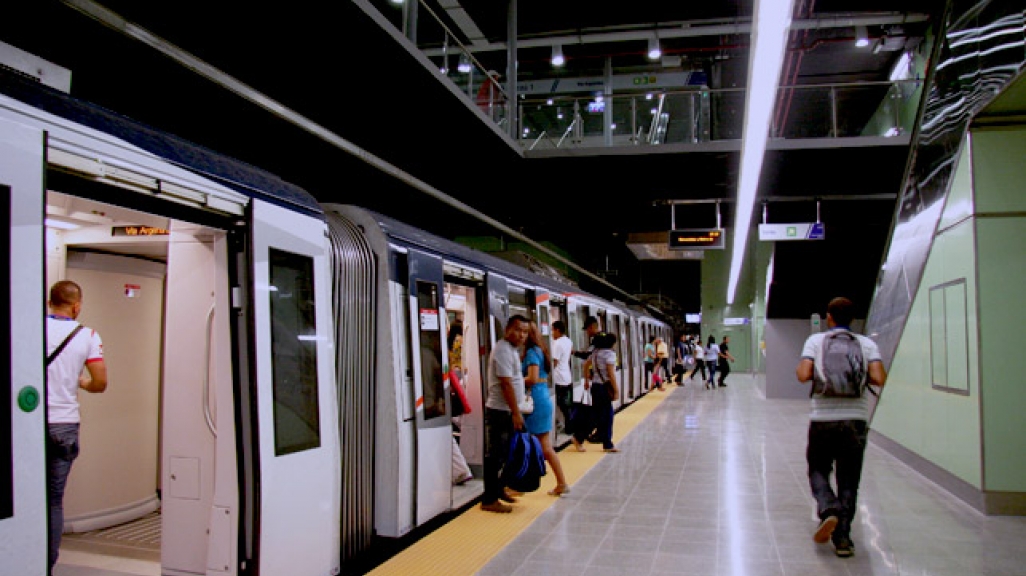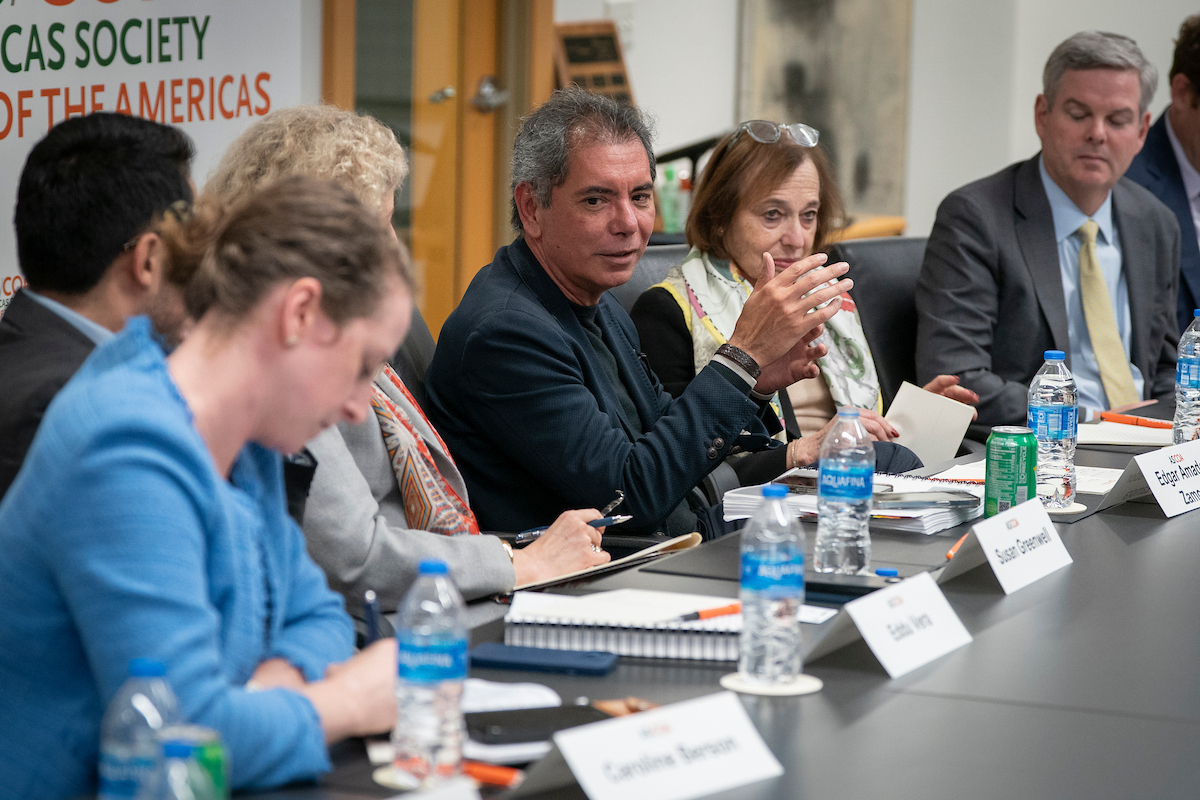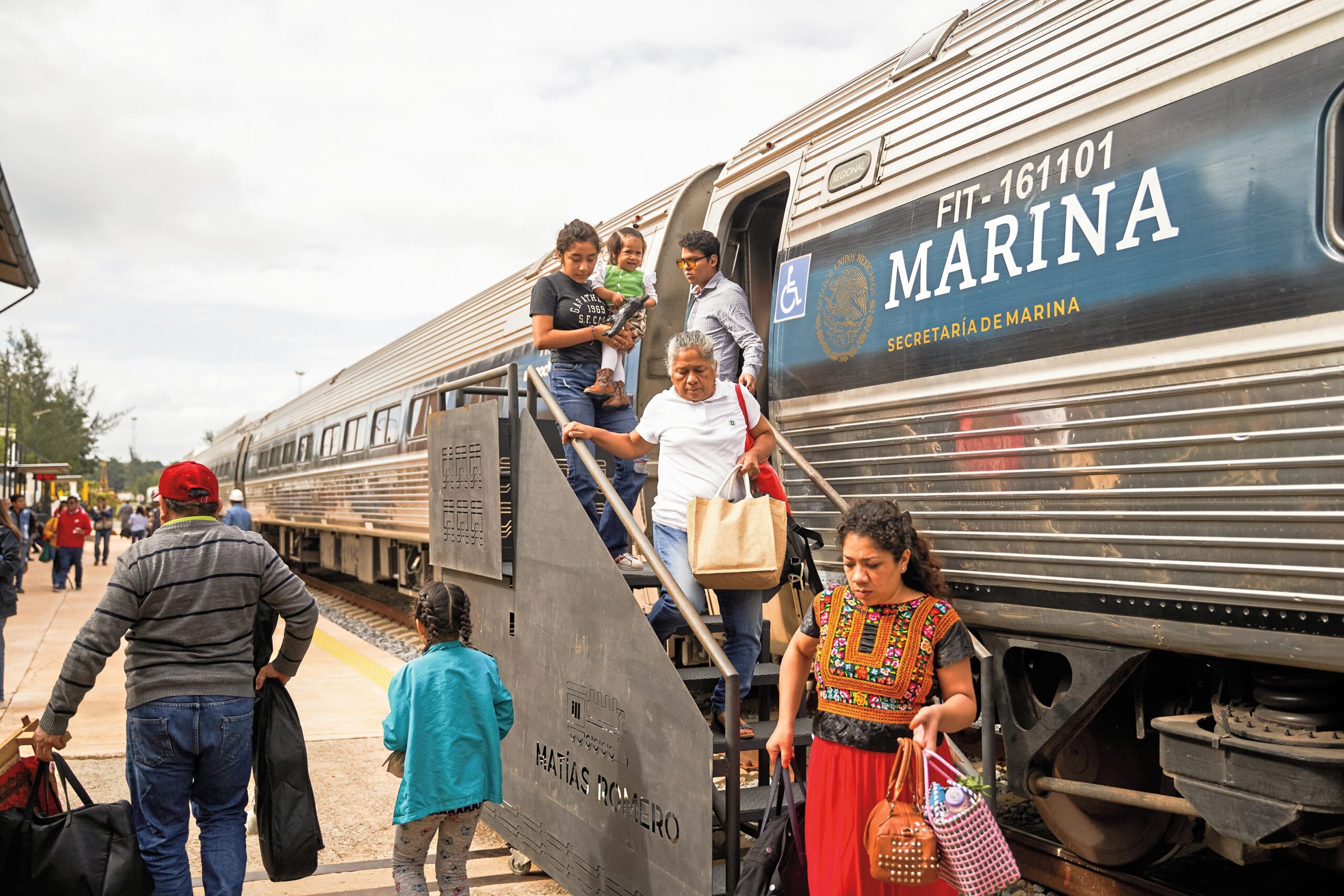On the Rails in Panama City: Central America’s First Metro Unveiled
On the Rails in Panama City: Central America’s First Metro Unveiled
Panama City inaugurated its metro this month, attracting 1 million passengers in the first week. AS/COA Online spoke with the project’s chief engineering advisor.
- Augustín Arias on Central America's First Subway
![]() Panamanian President Ricardo Martinelli unveiled Central America’s first subway system in the capital on April 5. The train, currently one line, runs north-south, makes 12 stops, and transports up to 15,000 passengers per hour with the system’s planned expansion to increase that number to 40,000. In the first week alone, more than 1 million people used the metro.
Panamanian President Ricardo Martinelli unveiled Central America’s first subway system in the capital on April 5. The train, currently one line, runs north-south, makes 12 stops, and transports up to 15,000 passengers per hour with the system’s planned expansion to increase that number to 40,000. In the first week alone, more than 1 million people used the metro.
Agustín Arias, chief engineering advisor for the Line 1 project of the Panama City Metro, talked with AS/COA Online about the new system’s impact. “There’s going to be a lot of benefits in terms of pollution because the system is completely electric,” he says. “We expect to also provide significant time savings and better quality and better safety for users of the public transportation system.”
|
Fast facts about Latin America's subways: What is the oldest system? Buenos Aires, Argentina has the oldest subway, which opened in 1913. It has six lines and around 37 miles of track. Mexico City’s metro came second and was inaugurated in 1969. Which system covers the most miles of track? Mexico City has the largest metro system in Latin America with over 140 miles of track. In 2013, nearly 92 million people used the subway. How many subway systems are there in the region? There around two dozen metro systems in Latin America, located in Argentina, Brazil, Chile, Colombia, the Dominican Republic, Mexico, Panama, Peru, and Venezuela. These include traditional metro systems and light rail transit. |
That doesn’t mean building Line 1 wasn’t without its challenges, from traffic impeding construction to taking into account issues specific to the capital city. Arias’ team looked at systems in Santo Domingo, San Juan, and Medellín, but he stresses that unique needs face each location. “Each metro is tailor made,” says the engineer. “Panama City is a longitudinal city…so it makes it a little bit more complicated to develop a network in Panama.”
Engineers predict that subway operational costs will exceed $194 million a year, but Panama Metro Executive Secretary Roberto Roy puts the tab at $52 million annually, with around half covered by fares. Still, the cost of a ride has yet to be determined, and the government waived fares until the end of Martinelli’s administration. (Elections take place on May 4, and the new president will be inaugurated on July 1.)
Overall, the project costs $2 billion, making it the country’s second most expensive project in the past century after the Panama Canal expansion. On April 9, Roy announced the construction plans for the second line, which will stretch 14 miles and add 17 stations. Arias says that Line 2 should be ready by the end of 2018, and within five years a third line will be constructed on the west side of Panama, crossing over the Panama Canal.
|
Which Latin American cities are building new subway systems? Some of the biggest subway projects in the works are underway in Brazil, Colombia, and Ecuador. Plans for a subway in Bogota have been in discussion for decades, but the project is still in the study phase. Current study results are expected in September 2014, after which concessions are due to begin. The proposed first line will have 17 miles of track with 27 stops and 50 trains. In Quito, a 14-mile-long metro is under construction with a price tag of nearly $1.5 billion. Expected to open in 2016, the subway will have 16 stops and carry up to 400,000 people a day. In Salvador, Brazil’s third largest city, the metro's been under construction since 1997, costing over $450 million. It’s expected to start operating in June 2014—just in time for the World Cup. Currently, Line 1 consists of around four miles of track, with plans to build a second line to extend the total to over 20 miles. Line 2 is slated for completion in 2017. Plans for urban rails systems are in the works for other Brazilian cities, such as Curitiba and Goiania. |









